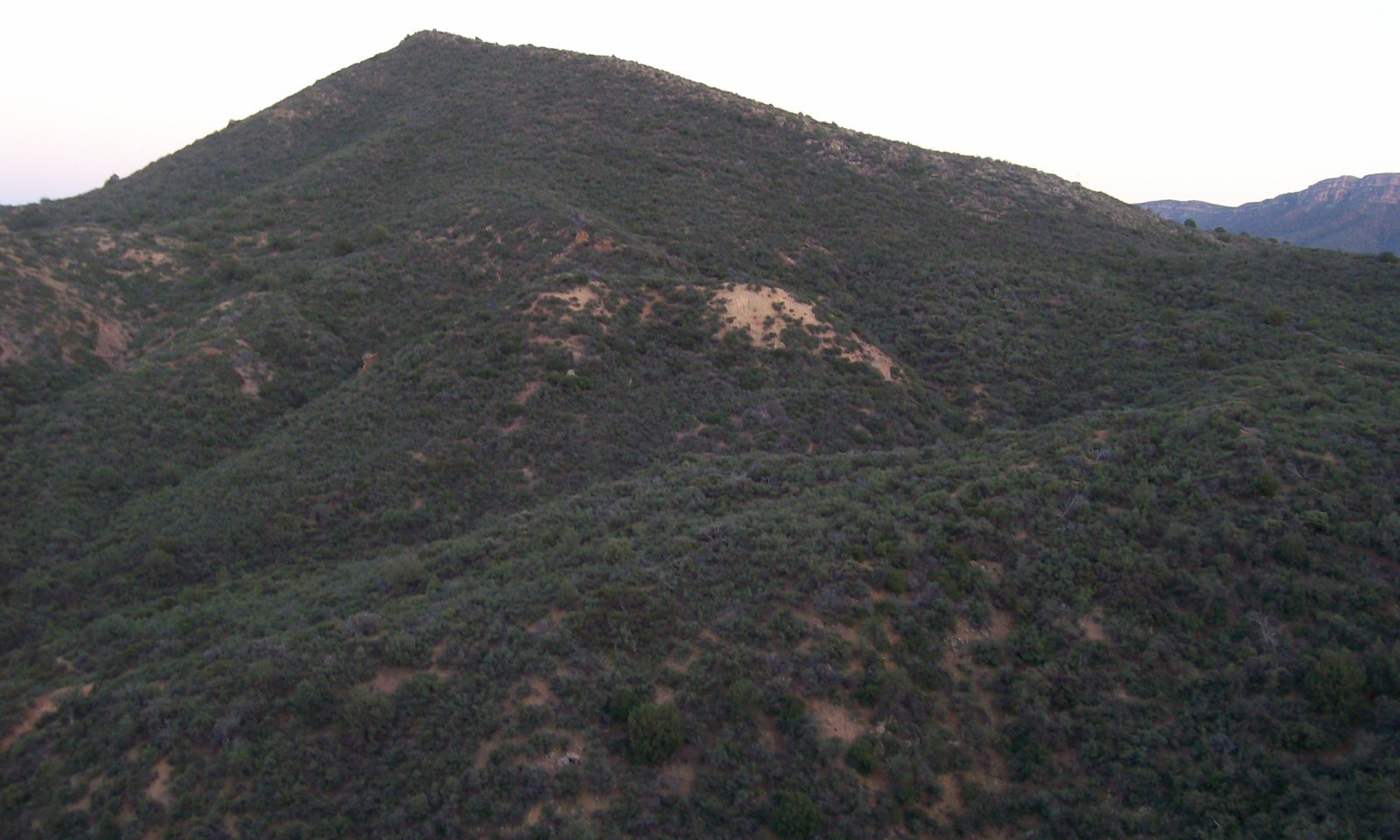
Granitic Hills 16-20" p.z.
Scenario model
Current ecosystem state
Select a state
Management practices/drivers
Select a transition or restoration pathway
- Transition T1a More details
- Transition T1c More details
- Transition T1b More details
- Restoration pathway R2a More details
- Transition T2a More details
- Transition T3a More details
-
No transition or restoration pathway between the selected states has been described
Target ecosystem state
Select a state
State 1
Chaparral State




Description
Three dominant plant communities cycle in this state with fire being the main driver between communities. Turbinella oak is the dominant shrub and the Reference Plant Community is the dominant community in most of Land Resource Unit 38-2. Wildfire is a natural component in this plant community but return intervals are relatively long. Estimates of fire return intervals are from 50-100 years (Pase, Charles P.; Lindenmuth, A. W., Jr. 1971, USFS Fire Effects Information System).
Shortly after fire burns the Reference Community a Shrub / Herbaceous Community can develop with a mixture of perennial and annual herbaceous species. This community is short lived and within 20 years shrubs return as the dominant in canopy cover. This community has been observed on the Bar F Bar Ranch south of Globe, AZ near the transition with LRU 38-1 where perennial grass potential is higher. This community should be able to occur at the transition between this site and LRU 38-3 where perennial grass potential is also high.
In the mid elevations of the LRU, this site may not have the potential to produce an herbaceous response after fire burns the community, due to the lack of proximity to a herbaceous seed source. This community has been observed on the MF Ranch south of the Pinto Valley Mine in Gila County.
Submodel
State 2
Shrub / Pinyon-Juniper State



Description
Pinyon and juniper establish and persist in absence of fire.
Submodel
Description
Manzanita is the dominant shrub, turbinella oak has less than 20% canopy.
Submodel
Mechanism
Pinyon pine and juniper germinate and persist on the site in the absence of fire.
Mechanism
Severe fire intensity kills high levels of turbinella oak and scarify abundant manzanita seed on site so manzanita becomes the dominant or only shrub on site.
Mechanism
The exact mechanism is poorly understood. Turbinella oak regenerates to less than 20% canopy cover and abundant manzanita seed on the site is scarified and it becomes the dominant shrub. The maintenance of turbinella oak in the community is likely only possible from low to moderate fire intensities not completely root killing the species as occurs in Transition 1c.
Mechanism
This is not necessarily a desirable restoration pathway due to human use of pinyon nuts but can be achieved through lower intensity wildfires or the application of lower intensity prescribed fire. Examples of this pathway are seen south of 7 Mile Wash along Hwy 60 where an auto catalytic converter ignited herbaceous fuels that spread to an adjacent hillside with 20-30% canopy of pinyon. Turbinella oak has persisted on the site and has resprouted vigorously.
Mechanism
Severe fire intensity kills high amounts of turbinella oak and scarifies abundant manzanita seed and manzanita becomes the dominant or only shrub on the site.
Model keys
Briefcase
Add ecological sites and Major Land Resource Areas to your briefcase by clicking on the briefcase (![]() ) icon wherever it occurs. Drag and drop items to reorder. Cookies are used to store briefcase items between browsing sessions. Because of this, the number of items that can be added to your briefcase is limited, and briefcase items added on one device and browser cannot be accessed from another device or browser. Users who do not wish to place cookies on their devices should not use the briefcase tool. Briefcase cookies serve no other purpose than described here and are deleted whenever browsing history is cleared.
) icon wherever it occurs. Drag and drop items to reorder. Cookies are used to store briefcase items between browsing sessions. Because of this, the number of items that can be added to your briefcase is limited, and briefcase items added on one device and browser cannot be accessed from another device or browser. Users who do not wish to place cookies on their devices should not use the briefcase tool. Briefcase cookies serve no other purpose than described here and are deleted whenever browsing history is cleared.
Ecological sites
Major Land Resource Areas
The Ecosystem Dynamics Interpretive Tool is an information system framework developed by the USDA-ARS Jornada Experimental Range, USDA Natural Resources Conservation Service, and New Mexico State University.





